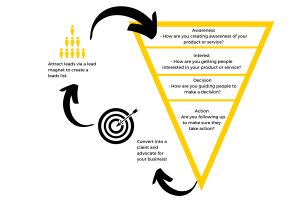A simple tool and 5 steps to intentionally building strong relationships
If you would like to access the video recording of this and the template, please click here to receive them.
Relationships used to happen organically. People gathered in the same physical space, they were able to connect (whether they wanted to or not) with others in a seamless way. Talking while making coffee in the same kitchen. The proverbial water cooler chat. Bumping into each other in the passages. Walking into the office from the car park. The opportunities for informal chats were endless. Most of these opportunities no longer exist. Remote, or hybrid working environments, have changed the way we build relationship. But we still need to build relationships. So how?
This is one to areas I’ve consistently heard people express concern about. Not just with new team members who were on-boarded post March 2020, but even with existing team members and other people within the organisation relationships need to be maintained.
Think like an entrepreneur!
Entrepreneurs are known for finding creative solutions to problems. Opportunities within the difficulties. While this may look like a natural and easy skill. It isn’t. We rely on different tools, mentors, support structures to achieve this. Here’s a tool, adapted slightly, that can help you work towards building relationships intentionally in a remote or hybrid working world.
The humble sales funnel!
The sales funnel is a process that takes potential customers through a journey. It starts with creating awareness about your product or service through to purchase and retention. Have a look at the image to get the idea.

Using a sales funnel to build relationships
Approach your relationship building like a business approaches business development. It’s time to get intentional about who you need to create relationships with and how you’re going to do it. This will not happen by accident anymore.
Relationships are centred around three key phases; know, like and trust. Once you know me, what can I do to make you like me and then how can I build your trust. Taking it one step further, how can I maintain that trust?
Step 1 – Who needs to know you?
This is your target market. It could be your colleagues, superiors, people in other departments, any who is key for you to build a relationship with. This could be a list of 2 people or 22. It doesn’t matter. Write their names down.
Step 2 – How am I going to connect with them?
Connect with people in a way that makes both you and them comfortable. It could be as simple as scheduling an informal cup of coffee. Perhaps the person doesn’t have time for coffee or prefers engaging online. Could you perhaps connect with them on a platform like LinkedIn or another social media platform? If they are in the office on specific days of the week, this could also be a good time to connect with them.
There are unlimited opportunities available to connect with people. The trick is to work out what works best for them but also what you would like to achieve with this connection. Getting a superior to notice that you’re a thought leader requires a very different approach to building a relationship with a colleague.
Step 3 – What will make them like me?
“Like” is a tricky word in this context. Perhaps a better word would be respect and being able to work together as a functional team. You may not have a common area of interest with everyone (and sometimes common areas of interest outside of work can be difficult to manage). But finding out what information your “target market” need from, when they need it by, how they like to receive it etc could go a long way to helping entrench the relationship. You could even go beyond this and find out how they like to work, when they prefer an email or a text message.
Get creative with this process. Keep thinking about other options and opportunities. Asking questions never did any harm either.
Step 4 – What will make them trust me?
Trust is built up through consistency and integrity i.e., doing what you say you will, when you say you will. And if you can’t, how are you communicating about not being able to meet requirements?
You’re probably doing a lot this unconsciously all ready. But by becoming conscious about it will give you the opportunity to tweak how you do things. You might also go truly entrepreneurial and find more efficient ways of delivering what you need to. Another word for this is systems and processes! Can you create micro systems and processes for yourself?
Step 5 – What will make them keep trusting me?
Trust can often be like a debit and credit system. If you have a lot of credit i.e., have a good reputation and become known for doing things well and on time etc. when you need to make a “withdrawal” (also known as making a mistake) it’s ok because you have the credit to do so. But trust can also be broken with one single action. Everyone has their absolute no no’s. These are the things that no matter how good your credit score, if you do this all trust will be wiped out. But if you’ve done your homework properly in step one you should know what these are, and you’ll be able to avoid them completely. Or just think about what single actions would wipe out years or months of trust for you? You can probably apply these to most people.
Discomfort is ok
Following this process might feel uncomfortable initially, like all new things. But keep working at it and have fun with this process. It will become more comfort and easy and your relationships and career will benefit.